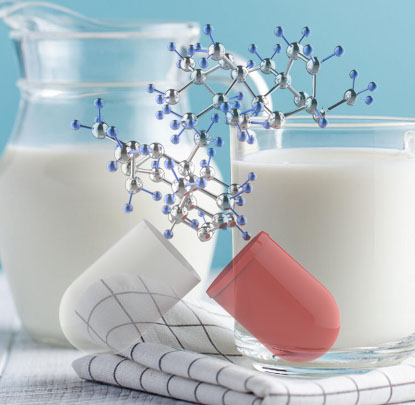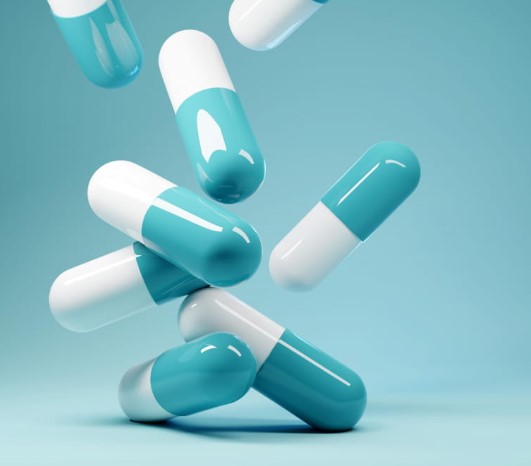Antibiotics in milk are nothing but drug residues...

Photo is illustrative in nature. From open sources.
Antibiotics in milk are nothing more than the remains of drugs that have been used to treat milk-producing animals. While Europe and the US have strict regulations governing the use of antibiotics in animals, some residues can still be passed into milk. This can happen for several reasons.
The first reason is the misuse of antibiotics in animals. Animals receive antibiotics to treat infections and diseases. However, if the antibiotic is used incorrectly, an overabundance of the drug in the animal's body can occur. As a result, some antibiotic residues may pass into milk.
The second reason is the improper processing of milk. In order to remove antibiotic residues from milk, it must be properly processed. If the milk has not been properly processed, then antibiotic residues may remain in it.
The third reason is the violation of the timing of the withdrawal of antibiotics. After an animal has received an antibiotic, its body must eliminate any remaining drug before the animal produces milk. If the animal gives milk before the body has completely eliminated the antibiotic, then the remains can get into the milk.
The fourth reason is the use of antibiotics as germinated food. Some farmers use antibiotics as germinated animal feed. If the animal receives such food, then antibiotic residues can enter the milk.
In any case, the presence of antibiotics in milk is a serious problem. This can be hazardous to the health of people who consume such milk. Therefore, the use of antibiotics in animals must be strictly controlled and the milk must be properly handled to minimize the risk of drug residues in the product.
Read together with it:
- I love my wife and son, but I'm thinking about divorceI am 34 years old. Recently I accidentally learned some terrible news. I am deeply offended. It’s hard to explain, but it has left me so unsettled that I’m thinking about divorce.My wife and I have never had any disagreements, although I am calm and she has a cool character. But she never argues, ne...
- Eternal loverI am 45 years old and my husband is 60. And I hate him. It's not even a matter of age. But I can’t leave him, there are too many things that bind me. Both the material side and purely humanly. We live together and get along. The former love and passion are long gone. As well as the money and opportu...
- I tolerate this attitude so that my son has a father.My life story began a little over two years ago. At first it seemed to me that this was my conscious choice of a man. I even made a plan, described point by point what qualities he should have, apparently I missed one point -alcoholism .I clearly understood that I was turning a blind eye to obvious ...
- My husband betrayed me and now he regrets itI'm 29 years old, I have a beautiful little onedaughter . I was in a civil marriage, before the registry office my exmy husband never arrived. We dated for 5 years, I fell in love with him and still love him, he is 10 years older than me. I got pregnant and we decided to get married.During pregnancy...
- My husband lost interest in me after giving birth and constantly criticizes meI have a cry from my soul and I don’t know how to proceed and I have no one to tell, I can’t tell my parents, I don’t want to upset them. You can’t tell everything to a friend, no matter how close she is.I cried all my eyes out from resentment and loneliness, but there was just darkness in my soul. ...
- Confession of a mother with a child under three years oldIn the morning I get up with an alarm clock at 7:20 to wake me uphusband to work. I don’t wish him good morning, I don’t make tea or breakfast. I angrily lift him out of bed so that his own alarm clock, to which he has been sleeping well for many years, does not irritate me and wake up my son. My so...
- My family life was like a vicious circleIt was difficult for me to understand those married couples who separated due to betrayal, some kind of grievances, and simply a basic misunderstanding of each other. We parted forever. “That means they didn’t love each other,” I thought. And with all my might, learning from other people’s mistakes,...
- Tests for antibiotics in milk: why they are needed and how they are carried outAntibiotics are powerful medications that are used to fight infections and bacterial diseases. However, their improper use can lead to the development of bacterial resistance to antibiotics, which creates seriousproblems for healthcare. One way to monitor antibiotic use is to test livestock products...
- Tests for antibiotics in milk: why they are needed and how they workMilk is a staple human food and its quality plays an important role in ensuring the health of consumers. However, sometimes in the milk production process they may be usedantibiotics , which can end up in the final product and pose a health hazard. To monitor the content of antibiotics in milk, spec...

